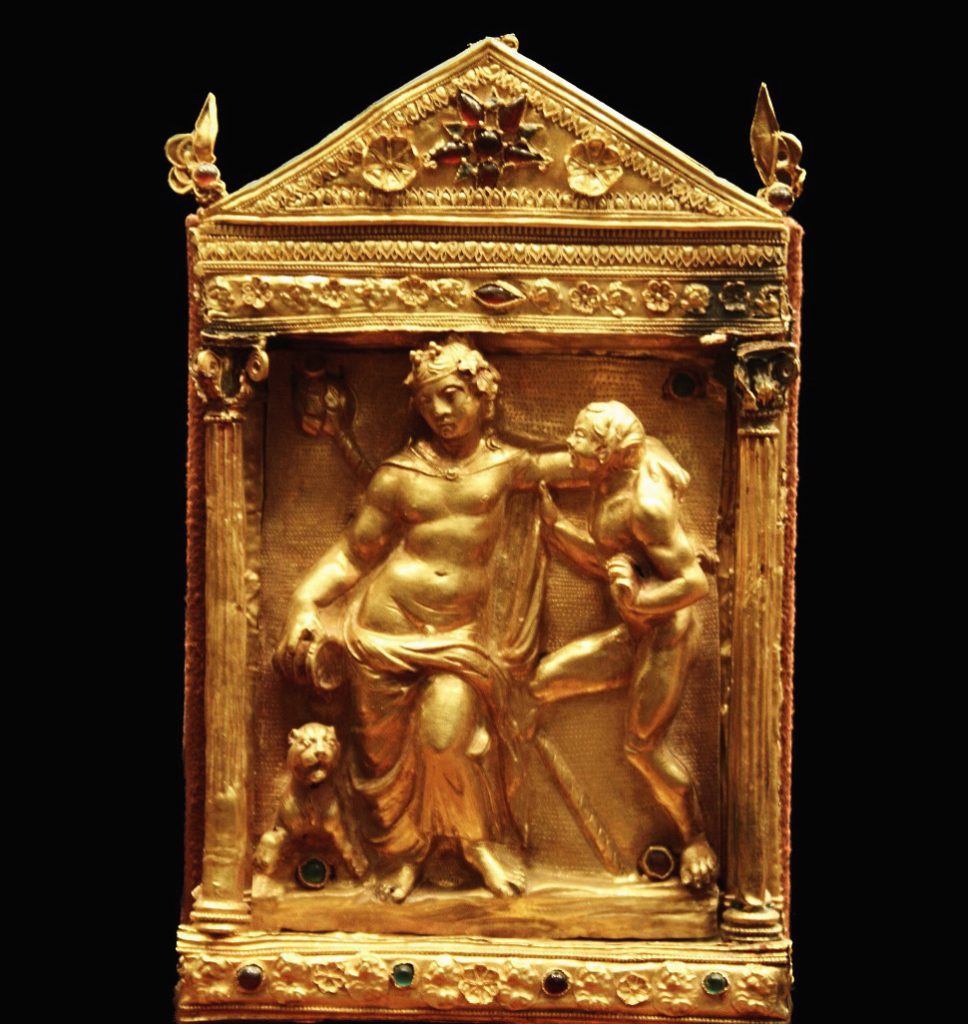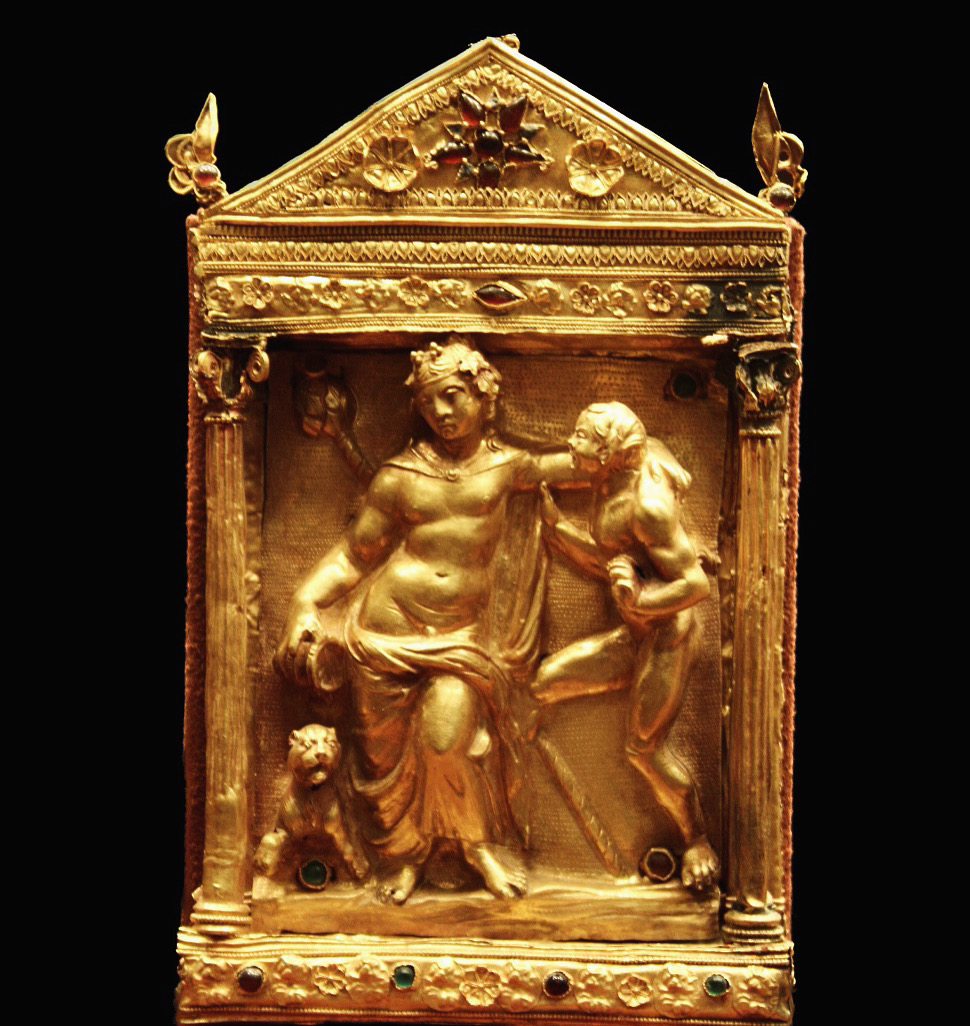Even though worship of Dionysos seems to have been as old as the rest of the Greek pantheon, he was traditionally regarded as a recent addition – an insolent young pup hailing from the exotic East, exuberantly making his way to Mt. Olympus.
Tasked by his wily stepmother Hera with conquering India, Dionysos did so handily by bringing the gift of the vine East. His subsequent triumph back to Greece was represented enthusiastically in art, especially in the Hellenistic period, surrounded by a coterie of exotic animals and his stalwart band of maenads and satyrs.

Gold and garnet naiskos with Dionysos and a satyr.
Greek, Hellenistic period, 2nd century B.C.
Athens, National Archaeological Museum, Athens (ST 379)
This stunner in hammered gold shows a vignette from the triumph (or after) in lavish miniature (under 15 cm if memory serves). Dionysos is front and center, youthful and nearly androgynous, with his mantle slipping low. He has apparently drained the large wine cup that droops in his right hand (with a panther attendant apparently interested in the dregs), and his supported by a leggy satyr to his left.
Allegedly discovered in a hoard in Thessaly (northern Greece), it dates from the 3rd-2nd century B.C and entered Athens’ National Archaeological Museum as a gift from Helene Stathatos in the 1950’s. The craftsmanship and format is pure Greek – the trio is set in a little naiskos with the architecture of a Greek temple (check out the incredible architectural decorations: palmettes, rosettes, guilloche, and egg and dart galore, all studded with garnet and emerald cabochons).
Dionysos is at his most loose and languorous, even softer and more rounded than usual for this period. I do wonder whether artistic influence from Gandhara and beyond are at work here. Plausible and even likely given Dionysos’s Indian connection, and heightened contact after Alexander’s activities and thoseof his successors. Thoughts?




